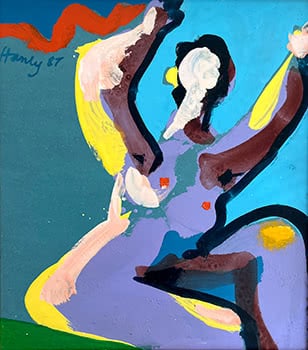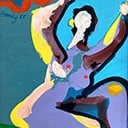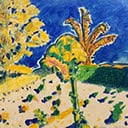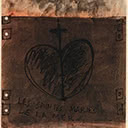Leaping Women Study
30 x 27 cm
PROVENANCE
Private Collection, Auckland Purchased directly from the artist 1987
Studying at the Canterbury College School of Art in Christchurch in the 1950s with fellow luminaries such as Jacqueline Fahey, Alan Pearson, Bill Culbert and Gil Taverner (whom he promptly married), Pat Hanly was a lively raconteur, one of the mainstays of Little Bohemia, a famous communal flat at 22 Armagh Street in the city centre.
His parents had pulled him out of the fourth form at Palmerston North Boys' High School to complete a hairdressing apprenticeship. He spent his first wages on a book on Rembrandt, and then completed the Fine Arts Preliminary course at night school while working full time. He enrolled at Canterbury as a non-Diploma student in 1952, and by 1953 had beaten every other painter in the school to win the landscape painting prize.
Travelling to London with wife Gil, he found work in the bars and clubs of Soho, and took classes at the Chelsea School of Art. The couple later travelled through Europe to admire the works of Henri Matisse and Pablo Picasso before returning with baby Ben in 1962, when Hanly was 30. Settling in Auckland, Hanly was struck by the bright Southern Hemisphere light and the sparkling reflections of boats sailing in the Waitemātā. His Figures in Light series resulted, with male and female figures bounding across the picture plane naked like a Pacific Adam and Eve.
Winning prizes such as the Manawatu Award for Contemporary Art in 1966 brought Hanly to national attention and his paintings were curated into international exhibitions of New Zealand art as exemplary of modern practice here.
While he never became a fully abstract painter, he began incorporating elements of poured or splashed paint into his compositions, connecting his practice to the experiments with gestural paint application of the American Abstract Expressionists, especially the action painters such as Willem de Kooning and Arshile Gorky. He adapted their process which involved splashing, using gestural brushstrokes and dripping paint onto canvas.
A committed pacifist, Hanly used his painting as his voice against nuclear arms and visits to New Zealand waters by nuclear submarines, as well as showing opposition to the Springbok Tour in 1981. The stockmarket crash of 1987 occasioned optimism and yearning for a return to a purity of sensation when New Zealand was his Garden of Eden. In this painting, thick, broadly painted black outlines are used to frame bright enamel colour to convey the energy of the nude in flight.
An unabashed lover of women and the female form, nudes recur as a motif in his work, representing not a particular person, but the nurturant and generative role of women in society. An unreconstructed modernist, in the early 1990s, Hanly began carving up earlier works on board and re-presenting them as Bouquets for All Women. It was his own unique version of postmodern pastiche.
LINDA TYLER





